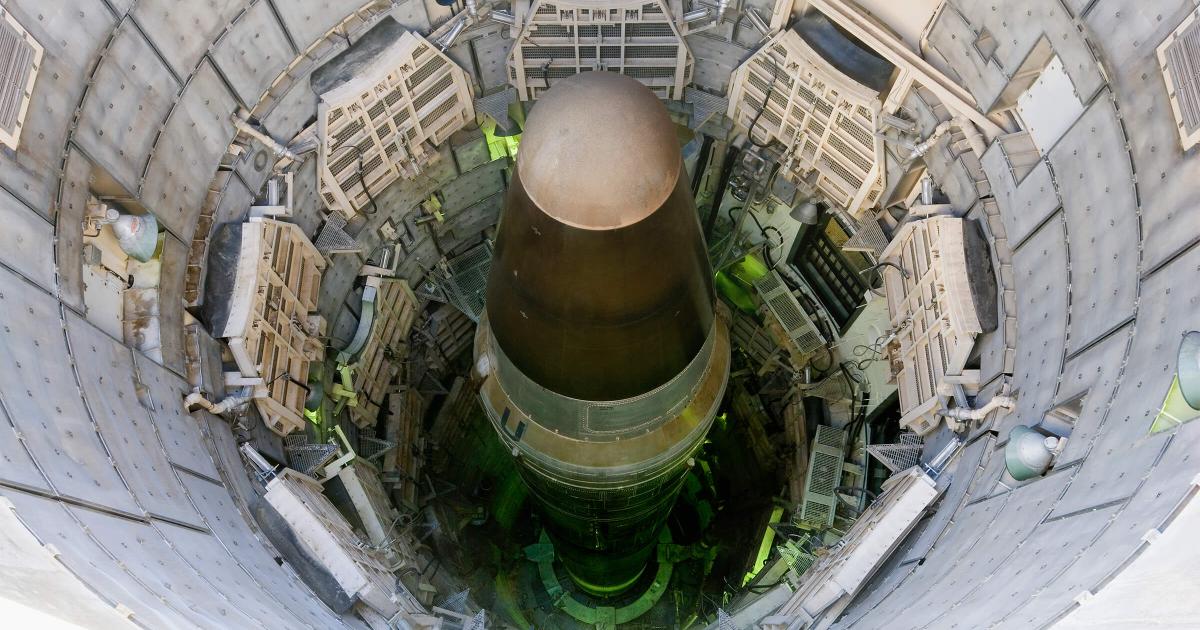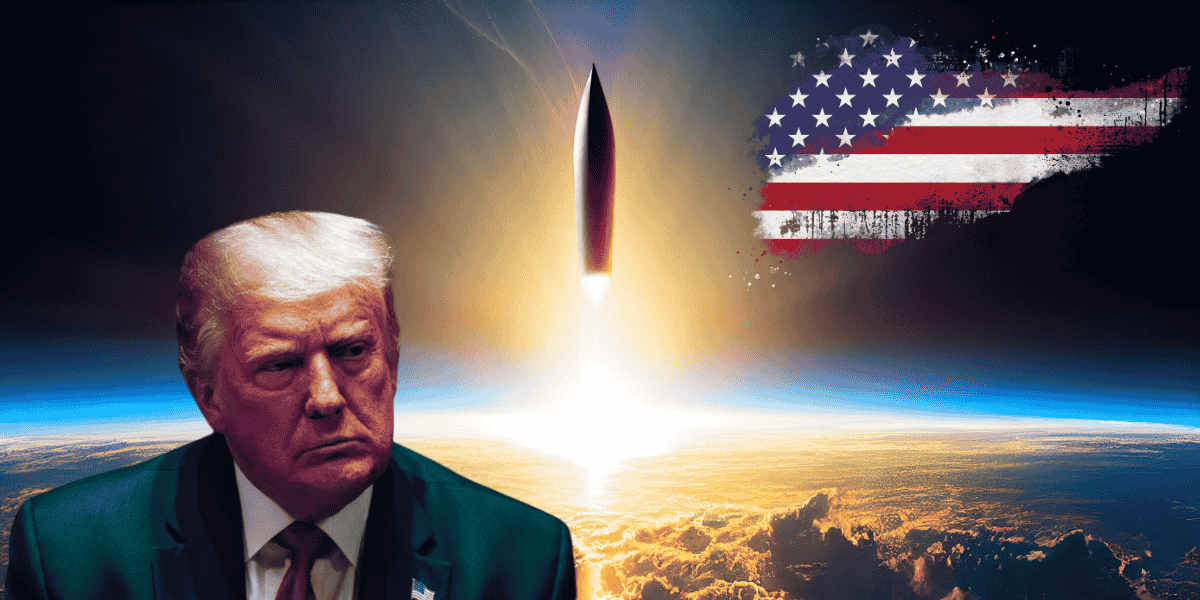With Russia threatening to use nuclear weapons in Ukraine, China adding more nuclear weapons to its stockpile, and North Korea modernizing its nukes with alleged Russian help, one of the critical decisions that Donald Trump will have to take after assuming office next January is how to deal with the nuclear threats facing the United States.
American strategic elites, including those senior officials who had occupied important positions in the previous Republican Administrations, are now arguing that the U.S. has not only to modernize and improve the quality and capability of its nuclear weapons but also be ready to use them on battlefields or operate them in a nuclear environment against adversaries who also possess nuclear weapons.
Trump is supposedly a hawk on the matter of nuclear weapons. During his first term, he nullified three important arms control agreements. He had repudiated the international agreement, making it harder for Iran to develop nuclear weapons.
Then, he disavowed the 1987 Intermediate-Range Nuclear Forces Treaty signed by President Reagan and Soviet leader Mikhail Gorbachev as he “felt” that Russia was cheating.
Most importantly, he had refused to extend the 2010 Strategic Arms Reduction Treaty, better known as START (a position President Biden not only reversed but also made Russian President Putin agree to in 2021 to extend it to 2026).
Despite the War in Ukraine and Putin’s threat of suspension in 2023, U.S. officials say that the Russian leader remains within the limits set by the START that Moscow and Washington do not deploy 1,550 strategic nuclear warheads on 700 intercontinental ballistic missiles (ICBMs), submarines and bombers.
Will Trump agree to a renewed or new START treaty with Russia? Though the answer is said to depend on the course of the war in Ukraine, the fact remains that even the Biden Administration wanted its scope to be revised to allow the deployment of more strategic weapons.
During his last term in office, Trump’s principal opposition to the extension or renewal of the START was that any such treaty should no longer be limited to the U.S. and Russia and that it has to be a three-way agreement to include China, which is feared to be possessing over 500 nuclear warheads and can have as many as 1000 by 2030.
According to the latest reports, the United States has some 3,700 warheads in its active arsenal. This includes 1,670 thermonuclear warheads deployed on 660 powerful, long-range missiles on land and at sea that can be delivered on strategic bombers, plus another 100 “tactical” nuclear bombs on shorter-range aircraft. Russia’s deployed nuclear force is roughly equivalent in size. China is currently estimated to have some 500 nuclear weapons and 310 long-range, nuclear-armed ballistic missiles.
Going by the speeches he delivered over the last two years, Trump is in favor of the expansion of the nuclear arsenal. Though he has disavowed it because of electoral compulsions, the Project 2025 blueprint for a second Trump administration (authored by his former officials) calls for testing nuclear weapons at the Nevada National Security Site, even though underground detonations would violate the 1996 Comprehensive Nuclear-Test-Ban Treaty (CTBT), which the U.S. has signed but not ratified, though it has not conducted tests since 1992.
Incidentally, in his recent Foreign Affairs article, O’Brien, one of Trump’s former national security advisors, argued that the U.S. should resume testing. “Washington must test new nuclear weapons for reliability and safety in the real world for the first time since 1992—not just by using computer models,” he wrote.
Going by the arguments of those who want a modernized American nuclear arsenal, the U.S. needs a new land-based intercontinental-ballistic missile (the Sentinel ICBM), a new fleet of strategic subs (Columbia-class), a new fleet of strategic bombers (the B-21); a new air-launched cruise missile (LRSO); a new sea-based cruise missile (SLCM-N); and refurbishment of all nuclear warhead types; a new-design warhead (the W-93), and two new plutonium pit production facilities that can produce 80 units per year.
However, Trump must consider the increasing budget and fight for congressional approval if the nuclear arsenal is to be upgraded. The Congressional Budget Office (CBO) has estimated that maintaining and upgrading the arsenal will require spending more than $756 billion over the 2023–2032 period, or an average of just over $75 billion a year.
However, if one goes by Dr. Emma Belcher, a world-renowned expert on nuclear weapons policy and President of Ploughshares (the largest foundation singularly focused on “freeing” the world from nuclear threats), the U.S. will have to spend up to US$2 trillion on the nuclear arsenal in the coming decades.

However, all this is one part of the story. The other part is whether Trump, like Putin, is prepared for fighting a nuclear war. And here, there seems to be a debate among the strategic elites, though increasingly in favor of the desirability of “limited nuclear wars.”
In a nutshell, the argument that seems to be winning is that nuclear weapons might be essential for winning a war (the same calculus that the US employed in August 1945 to win the war with Imperial Japan), as prolonged conflicts with most sophisticated conventional weapons may not end a war (like the Korean war that ended in a truce or compromise, distinct from victory).
As Major General Brad Gericke, US Army (ret.), a non-resident senior fellow at the Atlantic Council’s Scowcroft Center for Strategy and Security, and Donna Wilt, who previously served as the Army’s nuclear strategist and chief of the Army’s Nuclear and CWMD Operations Division argue, “It is hard to believe large-scale combat operations against a nuclear-armed adversary do not go nuclear if victory is being sought. The calculus that the United States employed in August 1945 to win the war with Imperial Japan will be the same that combatants use today.
“Admittedly, one other course is possible, and it is the outcome that the United States accepted in the Korean War. The decision then was not to employ nuclear weapons and thereby not to win the war. Not winning may not be a viable option in the next major state-versus-state war”.
This argument is against the traditional premise that possession of nuclear weapons is enough deterrent to dissuade an adversary from waging war, particularly when the concept of “massive nuclear retaliation,” leading to the destruction of everything, was in prominence. This fear, it was believed, was enough to prevent wars.

However, the opponents of this school of thought say that mere possession of nuclear weapons has not prevented wars or war-like situations even among the nuclear powers, between Russia and China in the late 1960s, between India and Pakistan in 1999 (Kargil war) or for that matter India and China in 2021 (Galwan, Ladakh), let alone other myriad conflicts, including those in Ukraine and the Middle East involving Russia and Israel (also a nuclear weapon-state).
Hence, the argument is that the U.S. should be prepared to use tactical nuclear weapons on the battlefield. Less powerful than strategic nuclear weapons, tactical nuclear weapons are intended to devastate enemy targets in a specific area without causing widespread destruction and radioactive fallout.
In this regard, Andrew Metrick, Philip Sheers, and Stacie Pettyjohn of the Centre for a New American Security (CNAS), a think tank in Washington, offer some reasons, two of which are particularly noteworthy.
One is the evolution of weaponry. “Most people, not unreasonably, think of conventional weapons as being less escalatory and thus more usable than nuclear ones. But today’s low-yield nukes—20 kilotons of explosive power, roughly Hiroshima-size—can be delivered with extreme precision and less collateral damage. The line between low-yield tactical nuclear weapons and precision-guided conventional weapons in terms of both their operational effects and perceived impact is blurring,” they say.
Secondly, there is the factor of the effect of a long war. “Weeks into a conflict, both sides would run short of conventional weapons. Theatre nuclear weapons would become more attractive. “On a per-weapon basis,” they note, “Nuclear arms are more efficient at destroying large-area targets.” Their immense power means they would continue to work even if weeks of war had degraded the command, control, and intelligence systems that conventional munitions rely on.
Incidentally, the Pentagon has updated its strategy to counter WMDs, particularly Chemical, Biological, Radiological, and Nuclear (CBRN), to incorporate new threats. It has renewed its nuclear posture review and, in 2023, completed a first-of-its-kind biological defense posture review.
In 2019, the Joint Chiefs of Staff published an updated nuclear operations manual outlining how unit commanders will respond to nuclear attacks.
The U.S. soldiers do conduct “Warfighter Exercise” periodically. Last year, the Army devised “a 2030 campaign plan, ” including a seven-year effort to prove new concepts for maneuver units operating in CBRN during large-scale combat. The idea is to ensure that soldiers across the force in operational and support units will see more time spent donning gas masks, stocking up on protective gear, and planning for the nefarious “what ifs” of a chemical, biological, or nuclear attack.
The Pentagon has reportedly asked for US$1.7 billion for CBRN research and development. The funding aims to improve soldier protection, detection, and threat reporting and add remote-controlled or autonomous methods to do the most dangerous work.
According to Craig P. Campbell, the Acting Deputy Assistant Secretary of Defense for Threat Reduction and Arms Control, U.S. military personnel overseas must be able to operate, survive, and prevail in a radiological-nuclear environment. They must be able to protect themselves, detect and identify the threat, then mitigate or provide consequence management. This has to be done all the way from the “forward leading edge” with remote and overhead sensors and includes reaching back to the United States. “And it has to be networked and interoperable with a multitude of systems,” he said recently.
His office is reported to have established a new radiological and nuclear defense capabilities development program with a budget of US$5 million a year. However, the required sum is said to be much bigger.
In sum, when Trump takes office in January, among the major security challenges that Trump has to confront increased budgetary provisions for augmenting America’s nuclear power will be a major one.
- Author and veteran journalist Prakash Nanda is Chairman of the Editorial Board of the EurAsian Times and has been commenting on politics, foreign policy, and strategic affairs for nearly three decades. He is a former National Fellow of the Indian Council for Historical Research and a recipient of the Seoul Peace Prize Scholarship.
- VIEWS PERSONAL OF THE AUTHOR
- CONTACT: prakash.nanda (at) hotmail.com
- Follow EurAsian Times on Google News




